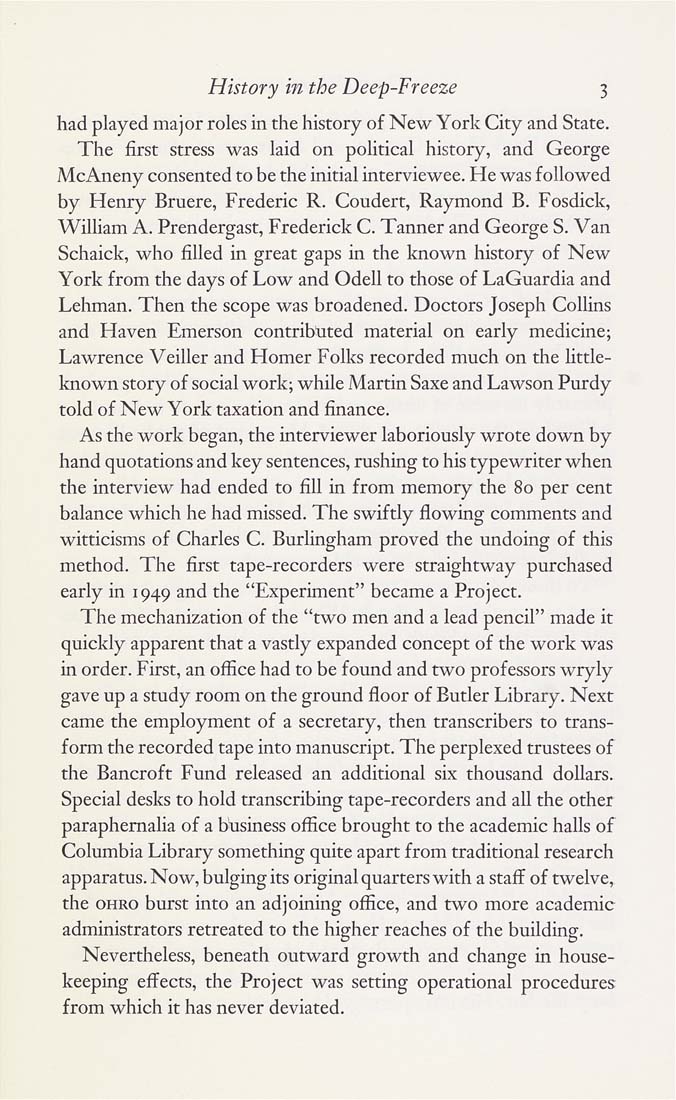Columbia Library columns (v.2(1952Nov-1953May))
(New York : Friends of the Columbia Libraries. )
|
||
|
|
|
|
| v.2,no.2(1953:Feb): Page 3 |

History in the Deep-Freeze 3 had played major roles in the history of New York City and State. The first stress was laid on political history, and George McAneny consented to be the initial interviewee. He was followed by Henry Bruere, Frederic R. Coudert, Raymond B. Fosdick, William A. Prendergast, Frederick C. Tanner and George S. Van Schaick, who filled in great gaps in the known history of New York from the days of Low and Odell to those of LaGuardia and Lehman. Then the scope was broadened. Doctors Joseph Collins and Haven Emerson contribnted material on early medicine; Lawrence Veiller and Homer Folks recorded much on the httle- known story of social work; while Martin Saxe and Lawson Purdy told of New York taxation and finance. As the work began, the interviewer laboriously wrote down by hand quotations and key sentences, rushing to his typewriter when the interview had ended to fill in from memory the 80 per cent balance which he had missed. The swiftly flowing comments and witticisms of Charles C. Burlingham proved the undoing of this method. The first tape-recorders were straightway purchased early in 1949 and the "Experiment" became a Project. The mechanization of the "two men and a lead pencil" made it quickly apparent that a vastly expanded concept of the work was in order. First, an office had to be found and two professors wryly gave up a study room on the ground floor of Butler Library. Next came the employment of a secretary, then transcribers to trans¬ form the recorded tape into manuscript. The perplexed trustees of the Bancroft Fund released an additional six thousand dollars. Special desks to hold transcribing tape-recorders and all the other paraphemaha of a business office brought to the academic halls of Columbia Library something quite apart from traditional research apparatus. Now, bulging its original quarters with a staff of twelve, the OHEO burst into an adjoining office, and two more academic administrators retreated to the higher reaches of the building. Nevertheless, beneath outward growth and change in house¬ keeping effects, the Project was setting operational procedures from which it has never deviated. |
| v.2,no.2(1953:Feb): Page 3 |







